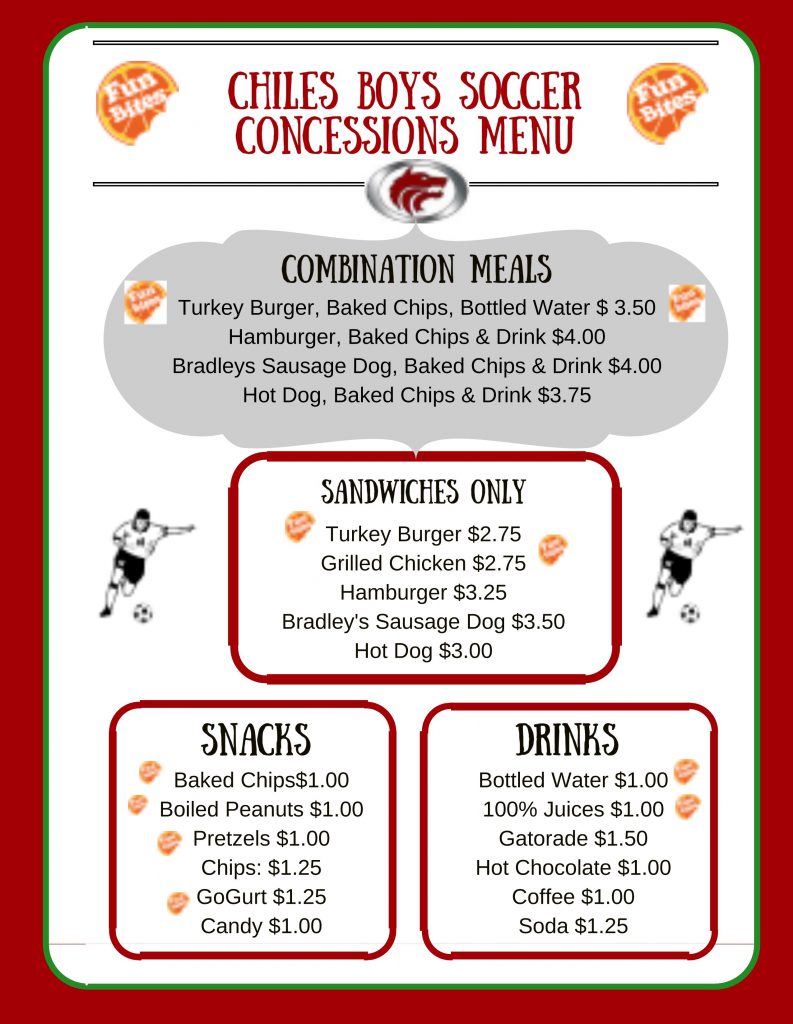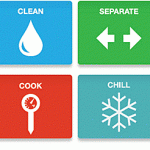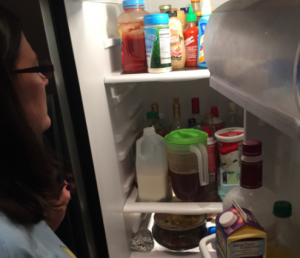by Amy Mullins, PhD, RDN | Sep 25, 2016
 A “sweet tooth” is something we are probably all guilty of having, to some degree. Eating the occasional cookie or slice of pie isn’t a crime and can have a place in the American diet, if consumed in moderation. Unfortunately, in our society there are enormous opportunities for sugary food, even in places where you’d least expect.
A “sweet tooth” is something we are probably all guilty of having, to some degree. Eating the occasional cookie or slice of pie isn’t a crime and can have a place in the American diet, if consumed in moderation. Unfortunately, in our society there are enormous opportunities for sugary food, even in places where you’d least expect.
Sugar in American food isn’t as obvious as it once was and seems to be lurking everywhere. Then there is the concept of “added sugars”, which may add to the confusion. Added sugar is exactly what it seems… additional sugar but with no nutritional benefit other than extra calories. The new food label has addressed this by showing grams of added sugars and also the % Daily Value based on the serving size. It’s important to check out the ingredient list on packaged products as well. Sugar has numerous forms and names, including brown sugar, raw sugar, corn syrup, lactose, dextrose, fructose, glucose, sucrose, high fructose corn syrup, honey, invert sugar, malt syrup, maltose, and molasses. The ingredients are listed in order of descending weight, so if sugar is a main ingredient in the product you will see it near the beginning of the ingredient list.
Is sugar bad?
Naturally occurring sugars, such as those in fruit or milk, are not considered added sugars. Natural sugars (carbohydrates) are part of many healthy unprocessed fruits, vegetables, and milk. These foods are good and are part of an overall healthy diet. The problem lies in the “added sugar” we often see in processed foods, even bread and yogurt can contain a large amount of additional sugar. We all know sugar has calories and extra calories can lead to putting on extra pounds. But, it’s not just our waistlines that may pay the price. A 2014 study published by the Journal of the American Medical Association-Internal Medicine found a “significant relationship between added sugar consumption and increased risk for CVD mortality”.
It seems that sugar may be causing more problems than initially believed, and until recently there haven’t been any official guidelines on how much sugar is acceptable. When the new Dietary Guidelines for Americans were released, this was a major factor to be addressed. A “Key Recommendation” calls for less than 10% of calories per day from added sugars. The American Heart Association goes even further with a recommendation of no more than 100 calories per day for women (about 6 teaspoons or 24 grams), and 150 calories per day (about 9 teaspoons or 36 grams) for men.
Currently, on average, added sugars account for almost 270 calories per day (more than 13%) and are particularly highest among children, adolescents, and young adults. Not surprisingly, beverages (soft drinks, fruit drinks, sweetened coffee and tea, energy drinks, alcoholic beverages, flavored water) account for 47% of all added sugars consumed in the U.S. (2015-2020 Dietary Guidelines for Americans).
What can we do?
Cutting down on sugary beverages such as soda, sports drinks, fruit juices, and syrupy coffee drinks is the first step in reducing our consumption of sugar. Reading labels and ingredient lists can help you identify how much carbohydrate and added sugar are in a product. Choose beverages with no-added sugars such as water, and limit or decrease portion sizes of grain-based and dairy desserts, sweet snacks, cakes, and candy. Choose unsweetened canned fruits, applesauce, and yogurt with no sugar added (2015-2020 Dietary Guidelines for Americans). The American Heart Association offers some additional Tips for Cutting Down on Sugar and ways to Sip Smarter.
With some label reading and determination we can change our consumption of sugar, reduce our waistlines, and reduce the risk of developing obesity-related chronic diseases.
Resources:
2015-2020 Dietary Guidelines for Americans
Added Sugars Add to Your Risk of Dying from Heart Disease, American Heart Association
Changes to the Nutrition Facts Label, FDA U.S Food and Drug Administration
Added sugar intake and cardiovascular diseases mortality among US adults, JAMA Intern Med. 2014 Apr;174(4):516-24.
by Laurie Osgood | Sep 25, 2016
FALL IS IN THE AIR, AND THAT MEANS FOOTBALL…AND CONCESSION STAND FOOD
Whether it is football, baseball or basketball season, they all have one thing in common, concession stands with their unhealthy food options. During a regular season, foods that are available in concession stands may be the only mealtime option for busy families and their athletes. Often, due to time and convenience, fans rely on the items that are sold at the concession stand for their families’ dinners.
On average, 73% of foods that are available in concession stands contain too much sugar, sodium, fat and calories. Although athletes may be burning calories on the field, eating unhealthy foods after a game may do more harm than good, leading to unbalanced diets consisting of too many calories, fat, and sugar.
BARRIER TO CHANGE:
The fear of lost revenue is perhaps the biggest obstacle to improving the nutritional value of concession stand foods. Traditionally, snacks and beverages sold in concession stands help generate crucial income for team essentials that are not covered by ever declining school sport budgets. There is a common misconception that healthy foods are more perishable and expensive, making booster clubs wary of tinkering with this critical revenue source.
SIMPLE SOLUTIONS THAT WORK
Small, simple modifications can be made to popular and profitable concession menu items without giving up revenue, or customer satisfaction. Therefore, a total menu overhaul is not necessary. Menus can be altered simply by adding 5-10 new healthy items and replacing unhealthy ingredients in existing menu items.
MARKETING A HEALTHY CONCESSION STAND:
According to E. Jerome McCarthy the “4 P’s of Implementation” can be an effective tool to market the healthier food and beverage options that are available to consumers. These strategies can help generate the profits that are essential to a team, without decreasing customer satisfaction.
4P’s of implementing a Marketing Plan:
- PRODUCT: Offer healthy snacks and beverages options along with existing menu items that are proven to sell. Make small changes to popular menu items to improve their nutritional value. Example: provide whole wheat buns on all sandwiches.
- PLACEMENT: Place healthier items at the top of menus or in clear view in order to make more healthful food more prominent and appealing. Example: prominently display healthier snacks in a decorative basket in full view of the customers and put candy behind the counter.
- PROMOTION: Promote healthy options by displaying promotional material and menus that promote the healthier choices that are available to families.
- PRICE: Make the healthier options more affordable than the unhealthy options-creating a cost-neutral outcome for the booster club. Example: price bottled water and 100% juices lower than soda.
Here is an example of a mock menu:

TIME FOR A HEALTHY CHANGE
Concession stands will always be a part of most high school sporting events. Therefore it is time to overhaul concession stand fare. Simple modifications can include offering 5-10 new healthy items along with replacing unhealthy ingredients in popular options without fear of losing sales and customer satisfaction.
WANT MORE INFORMATION?
The Family and Consumer Sciences (FCS) Agent at the Gadsden County UF/IFAS Extension office may have more information on food labeling or classes for you to attend. Also, a registered dietitian (RD) can provide you with reliable information.
REFERENCES:
- Journal of Public Health (2014, March 12) Laroche, H., Ford, C., Hansen, C., Cai, X., Just, D., Hanks, A., & Wansik, B. Concession stand makeovers: A pilot study of offering healthy foods at high school concession stands.
- Castle, J. (2015, July 14). REAL MOM NUTRITION BLOG: It’s Time to Build a Healthy Concession Stand – Jill Castle. http://jillcastle.com/young-athletes/build-healthy-concession-stand/
- US News and World Report: June 29, 2012. Retrieved from http://health.usnews.com/health-news/news/articles/2012/06/29/young-athletes-face-unhealthy-food-choices-parents-say
FOOTNOTES
Laurie B. Osgood, Family and Consumer Sciences Agent, Gadsden County Extension, UF/IFAS Extension, Quincy, FL 32351 (850) 662-3287 Osgoodlb@ufl.edu
The Institute of Food and Agricultural Sciences (IFAS) is an Equal Opportunity Institution authorized to provide research, educational information and other services only to individuals and institutions that function with non-discrimination with respect to race, creed, color, religion, age, disability, sex, sexual orientation, marital status, national origin, political opinions or affiliations. For more information on obtaining other UF/IFAS Extension publications, contact your county’s UF/IFAS Extension office.
U.S. Department of Agriculture, UF/IFAS Extension Service, University of Florida, IFAS, Florida A & M University Cooperative Extension Program, and Boards of County Commissioners Cooperating. Nick T. Place, dean for UF/IFAS Extension.
by Shelley Swenson | Sep 25, 2016
 Would you agree that kids get plenty of candy while trick or treating? Wouldn’t it be fun this year to focus on Halloween fun instead? Here are some ideas for parents, grandparents, adopted grandparents, teachers and neighbors to enjoy a Halloween celebration that does not focus on candy!
Would you agree that kids get plenty of candy while trick or treating? Wouldn’t it be fun this year to focus on Halloween fun instead? Here are some ideas for parents, grandparents, adopted grandparents, teachers and neighbors to enjoy a Halloween celebration that does not focus on candy!
- Focus on the costumes both for the children in your life as well as how you might choose to dress when you greet children as you receive them when they come to your home.
- If you live in a neighborhood, put together a costume parade so that everyone can see and appreciate the uniqueness of each child and their costume.
- Instead of candy, try giving small toys like stickers, small plastic spiders or ghosts, spooky plastic rings, chalk, fat pencils or crayons, small coloring books, bubbles or false teeth.
- Decorate pillowcases with your children for their trick-or-treat outing. This just extends the fun of the evening and encourages creativity.
- Food snacks worth giving include:
- Small containers of apple cider
- Roasted pumpkin seeds
- Small oranges
- Commercially wrapped baby carrots
- Mini-packages of dried fruit
- Packages of whole grain crackers with cheese
What is behind these suggestions? Typically, foods for Halloween include lots of candy. So what’s the harm? There is nothing wrong with an occasional treat, but unhealthy choices have become the norm rather than the exception. Parties, food fundraisers, vending machines, and school parties constantly expose children to high-fat, high-sugar, and low-nutrient choices.
Overall our children’s eating habits are poor. Most children do not eat enough fruits, vegetables or whole grains. Obesity rates among children are on the rise, with serious health consequences. Constant exposure to low-nutrient food makes it difficult for children to learn how to make healthy food choices. By providing children with nutritious choices whenever food is available, including Halloween, we can positively influence children’s eating habits.
Remember, children need to receive consistent messages that their food choices are important. What do you think? Are you willing to make some changes?
Happy Halloween!

by Angela Hinkle | Sep 7, 2016
The month of August has been a financially painful time for me. I blame this on the fact that my only child has just begun her first year at college. Lots (and I mean a whole lot) of spending happened in preparation for this auspicious endeavor.
- Ouch – I began to question if I was spending more than I was making. (This was brought on by reading Building a Spending Plan: All Six Steps, a UF/IFAS EDIS publication.) Actually a very helpful financial read. Check it out: http://edis.ifas.ufl.edu/pdffiles/HE/HE82700.pdf
- Ouch – My credit card bills in the last few months have been quite hefty.
- OUCH – The college bills for housing and tuition came due.
What to do to help alleviate some of the pain caused by this financial stress? I remember reading about “no-spend” months. People often pick February because it has the fewest number of days. But I feel the need for immediate action – and so September it is.
A no-spend month means you don’t spend money on anything except the absolute necessities. I have to pay the mortgage, the car payment, utilities, and I have to get may nails done (yes, that is, in fact, a necessity for me). But no buying clothes or shoes, going out to eat, going to the movies, buying gum or an emergency caffeinated drink. Since there is no child in my house now, I think I may actually be able to do this.
Researchers say if we tell others about our goal, we are more likely to work hard to achieve it. So I told the participants in a health class I was teaching about this goal of mine. One very sweet, gentle, older woman said, “Honey, you know you can’t do that.” My somewhat deflated response was, “Why?” Her kind answer – “You know you’re going to send that child care packages.” Right she was.
However, undeterred, quite determined actually, I have found ways to plan around such obstacles. I sent a care package to the child at the end of August and will send the next one at the beginning of October. I will eat out of the fully stocked freezer and pantry to avoid trips to the store. I will start September with an already full tank of gas. I will watch TV at home. I will do this!
Once October rolls around, check back in and I’ll let you know how I did. Wish me luck!
by sbouie | Aug 28, 2016
 September is National Food Safety Month. However, food safety should be practiced every day of the year and for every meal and/or snack. We live in a busy society. We are always in a rush to do and to go to whatever we have planned.
September is National Food Safety Month. However, food safety should be practiced every day of the year and for every meal and/or snack. We live in a busy society. We are always in a rush to do and to go to whatever we have planned.
When it comes to our food, we need to make the time to observe steps to food safety. Food safety will decrease the opportunity for food borne illness. The steps are as follows:
- Clean – everything that touches the food. This includes hands, utensils, surfaces, and foods – fruits, vegetables, but not meats or eggs. Wash hands in hot water and soap for at least 20 seconds. Bacteria can get on cutting boards and utensils. Rinse fresh fruits and vegetables under running tap water, including those with skins and rinds that are not eaten. Rub firm-skin fruits and vegetables under running tap water or scrub with a clean vegetable brush while rinsing with running tap water.
- Separate – surfaces used for raw meats and eggs from other foods or surfaces when shopping, storing, preparing, and cooking. This will prevent cross-contamination.
- Cook – food at the correct temperature by using a food thermometer (see the chart below). The danger temperature zone is 400 to 1400 Fahrenheit. This is when bacteria rapidly grows.
- Chill – Refrigerate perishable foods within two hours. Never thaw or marinate foods on the kitchen counter.
After you remove meat from a grill, oven, or other heat source, allow it to rest for the specified amount of time. During the rest time, its temperature remains constant or continues to rise, which destroys harmful germs.
| Category |
Food |
Temperature (°F) |
Rest Time |
| Ground Meat & Meat Mixtures |
Beef, Pork, Veal, Lamb |
160 |
None |
| Turkey, Chicken |
165 |
None |
| Fresh Beef, Veal, Lamb |
Steaks, roasts, chops |
145 |
3 minutes |
| Poultry |
Chicken & Turkey, whole |
165 |
None |
| Poultry breasts, roasts |
165 |
None |
| Poultry thighs, legs, wings |
165 |
None |
| Duck & Goose |
165 |
None |
| Stuffing (cooked alone or in bird) |
165 |
None |
| Pork and Ham |
Fresh pork |
145 |
3 minutes |
| Fresh ham (raw) |
145 |
3 minutes |
| Precooked ham (to reheat) |
140 |
None |
| Eggs & Egg Dishes |
Eggs |
Cook until yolk and white are firm |
None |
| Egg dishes |
160 |
None |
| Leftovers & Casseroles |
Leftovers |
165 |
None |
| Casseroles |
165 |
None |
| Seafood |
Fin Fish |
145 or cook until flesh is opaque and separates easily with a fork. |
None |
| Shrimp, lobster, and crabs |
Cook until flesh is pearly and opaque. |
None |
| Clams, oysters, and mussels |
Cook until shells open during cooking. |
None |
| Scallops |
Cook until flesh is milky white or opaque and firm. |
None |
Food is for the nourishment of our body, not to make us sick. Take the time to clean, separate, cook, and chill foods to avoid food borne illness. For more detailed information and videos, visit www.foodsafety.gov and www.fightbac.org.
Sources: www.foodsafety.gov; www.fightbac.org
by Dorothy C. Lee | Aug 28, 2016

Does lettuce turn brown and slimy in your refrigerator? Is that two-year-old frozen turkey still safe to eat? Should you dispose of that slightly moldy cheese? “When in doubt throw it out” is definitely a safe practice to follow. However, throwing food out is like throwing money away. A few simple guidelines for food storage can save dollars and time spent on shopping.
Dairy Do’s and Don’ts
- Buy milk in cardboard cartons or non-translucent containers. Translucent containers allow light to seep in, which can cause the milk to spoil. Store milk in a refrigerator that is set at 40° or lower. Don’t store milk in the door of the refrigerator. Items stored in the door of the refrigerator are more susceptible to warm air that enters the refrigerator each time the door is opened.
- Discard unused milk after the container has been opened for a week. Milk may be frozen for up to three weeks.
- Ice cream has a shelf life of two to four months as long as it is stored in a freezer that is set at zero degrees Fahrenheit.
- Yogurt should be used within seven to ten days of purchase.
- Butter may be refrigerated, tightly wrapped, for up to one month and be frozen for six months.
- Hard cheeses will keep for three or four weeks, tightly wrapped, in the refrigerator once they have been opened. Processed cheese spreads will keep for three to four weeks after opening.
- Purchase eggs before the sell by date. Store eggs in their original packaging on the middle or lower shelf of the refrigerator. Refrigerated uncooked eggs will keep for three to four weeks from the time they are purchased. Hard boiled eggs in the shell will keep for one week. Don’t freeze hard cooked whole eggs or egg whites. They will be tough and watery when defrosted. Raw egg whites can be frozen in ice cube trays.
Meat and Poultry
- Store meat and poultry in a refrigerator set at 35° to 40° Fahrenheit.
- Put packages of raw meat, poultry, or fish on a plate before refrigerating so their juices won’t drip on other foods. Raw juices often contain bacteria.
- Follow the “use by”, “keep refrigerated”, and “safe handling” information on the packaged meat label.
- Meat should be cooked or frozen within a few days of purchase.
- Use chicken by the sell-by date unless you plan on freezing it.
- Chicken and turkey may be frozen for nine months to a year.
- Cooked chicken or turkey should be eaten or frozen within three to four days of preparation.
Fruits and Vegetables
- Use refrigerated fruits and vegetables within a few days of purchase. Wash vegetables and fruits thoroughly right before eating or preparing.
- Fruits and vegetables stored at room temperature should be stored in perforated bags away from direct sunlight.
Canned Food Items
- Don’t purchase cans that are dented, bulging, or rusted.
- Store canned goods in a cool dry place.
- Rotate canned food items on a timely manner to establish a well-stocked pantry.
- Shelf life is determined by the acid content of the canned food.
To assure safe food storage, USDA recommends an appliance thermometer be installed in all refrigerators and freezer sections. Appliance thermometers are available at local supermarkets or discount stores. The refrigerator section should be set at 40°F and freezer section at 0°F.
Safe food storage is top priority to prevent foodborne illness. So remember, “Store It Right!”
For further information, contact:
Dorothy C. Lee, CFCS
UF/IFAS Extension Escambia County
3740 Stefani Road
Cantonment, FL 32533-7792
(850) 475-5230
dclee@ufl.edu
Reference: www.USDA.gov
 A “sweet tooth” is something we are probably all guilty of having, to some degree. Eating the occasional cookie or slice of pie isn’t a crime and can have a place in the American diet, if consumed in moderation. Unfortunately, in our society there are enormous opportunities for sugary food, even in places where you’d least expect.
A “sweet tooth” is something we are probably all guilty of having, to some degree. Eating the occasional cookie or slice of pie isn’t a crime and can have a place in the American diet, if consumed in moderation. Unfortunately, in our society there are enormous opportunities for sugary food, even in places where you’d least expect.





